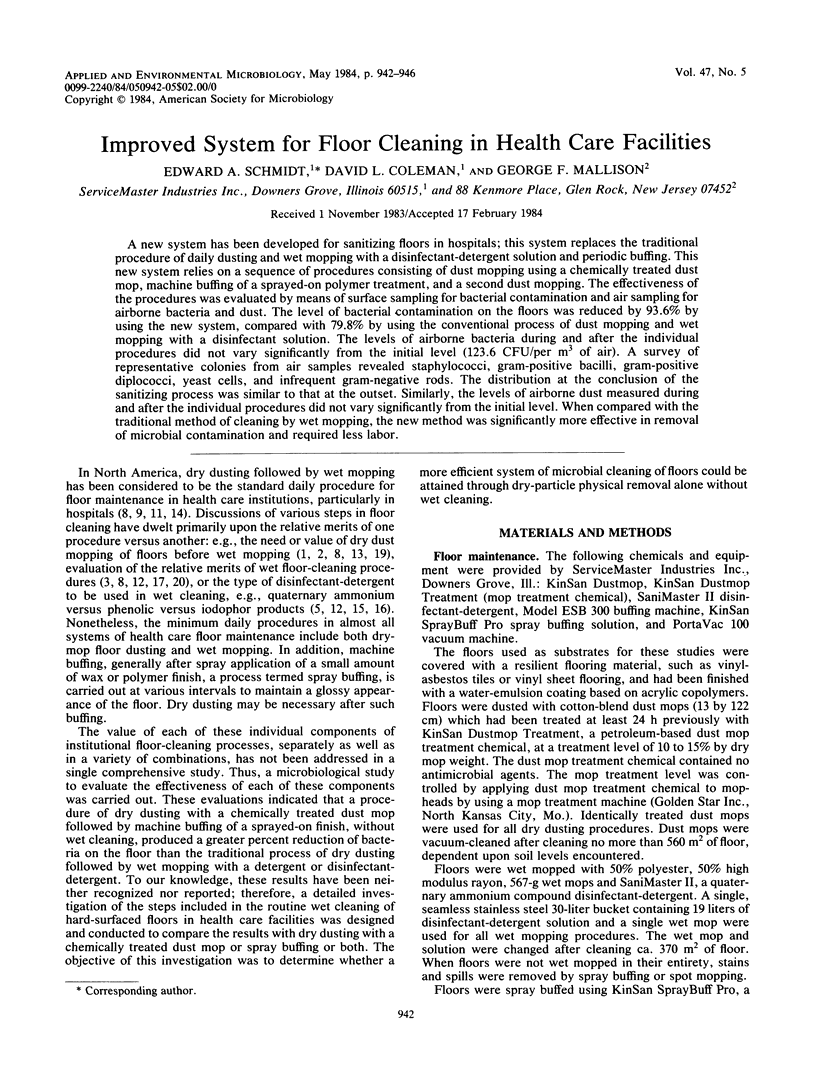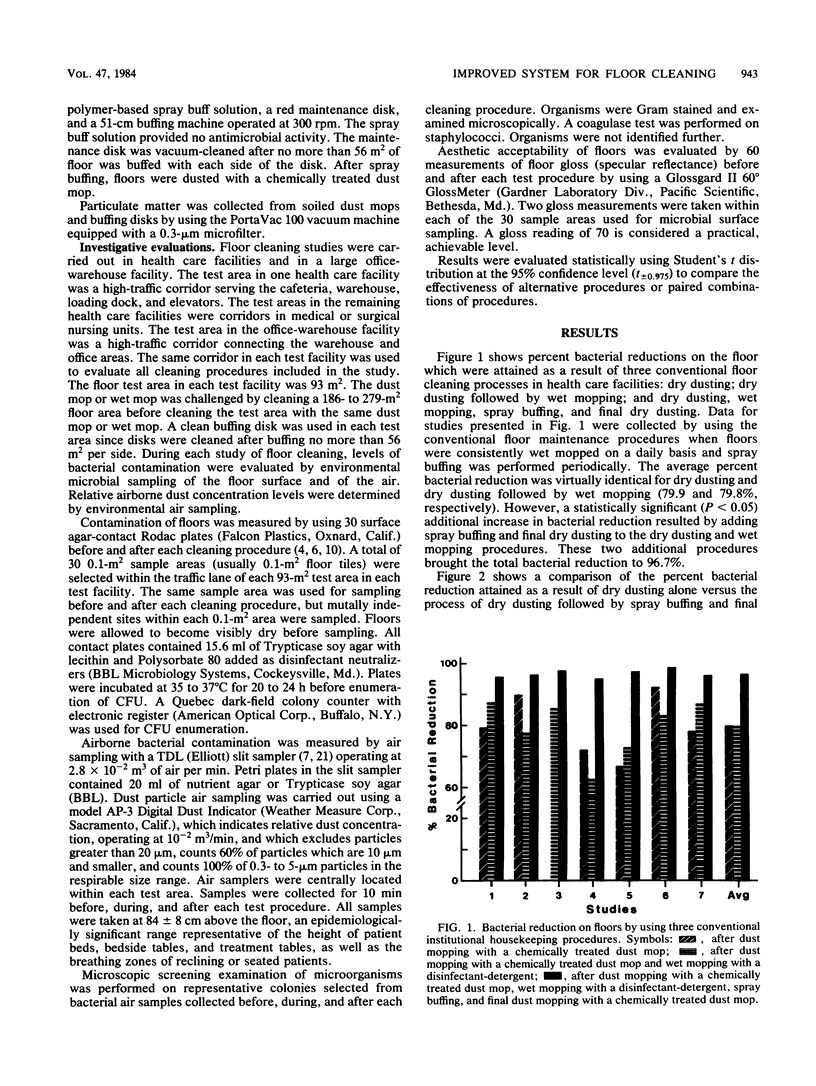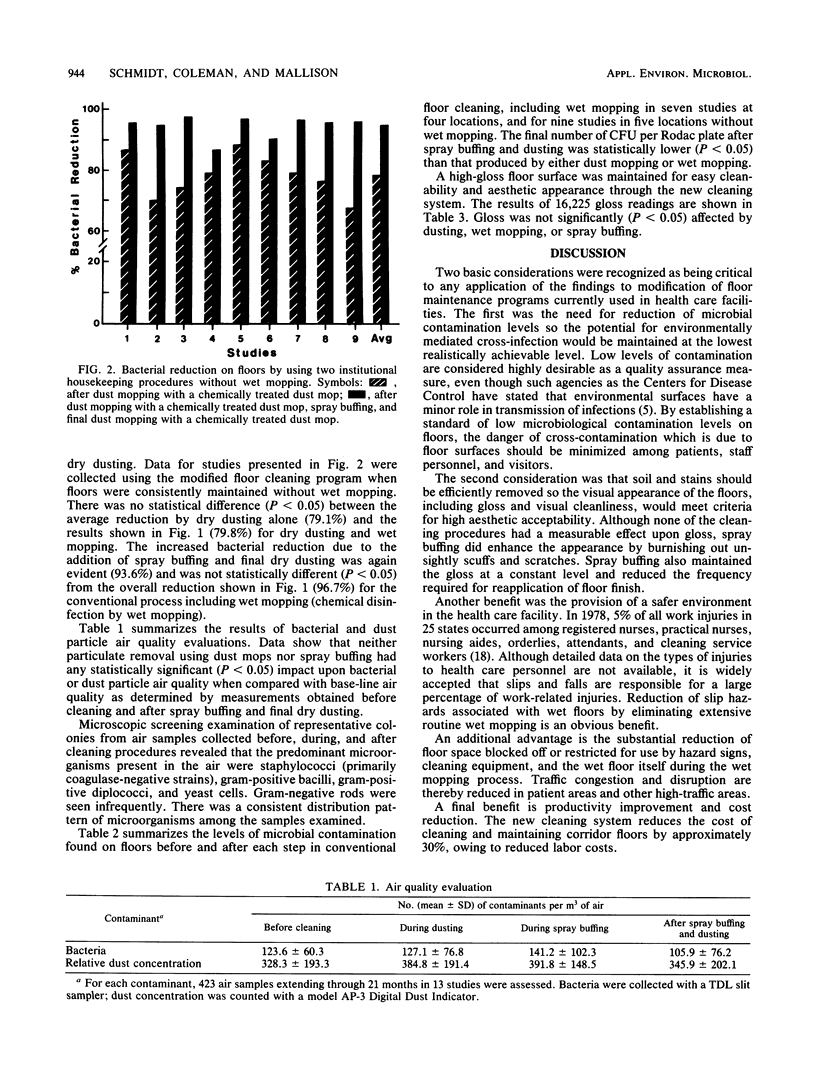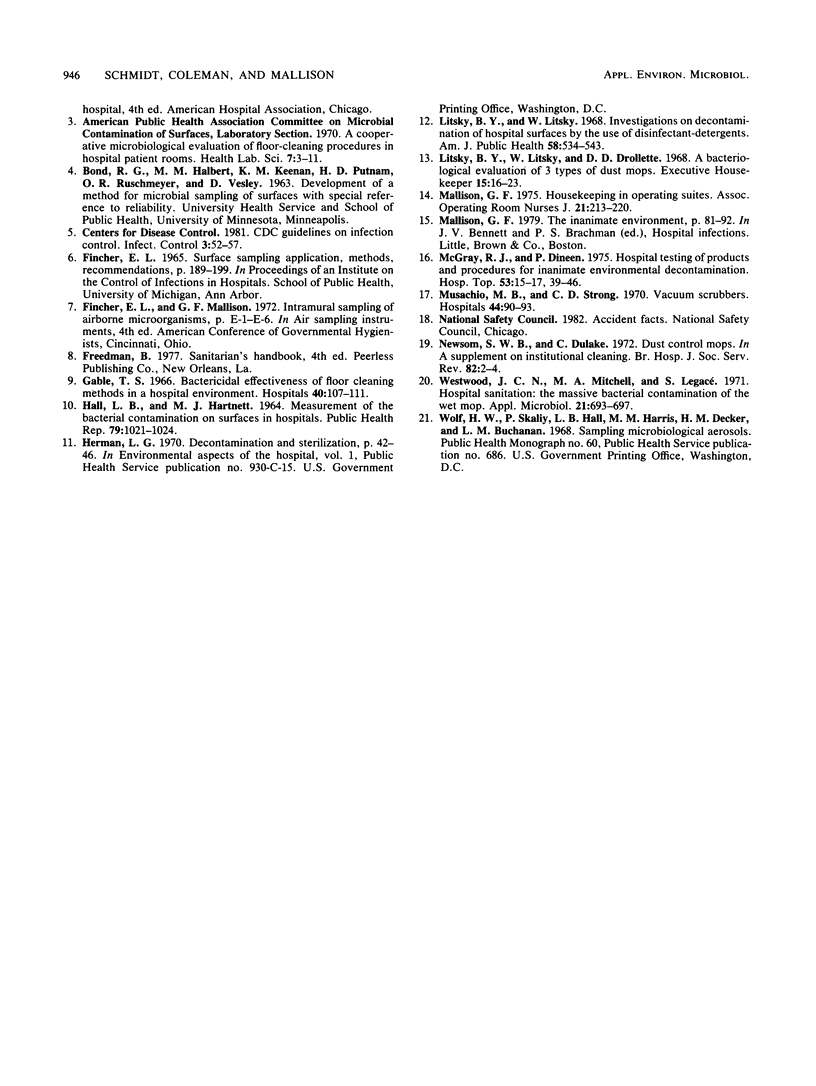Abstract
A new system has been developed for sanitizing floors in hospitals; this system replaces the traditional procedure of daily dusting and wet mopping with a disinfectant-detergent solution and periodic buffing . This new system relies on a sequence of procedures consisting of dust mopping using a chemically treated dust mop, machine buffing of a sprayed-on polymer treatment, and a second dust mopping . The effectiveness of the procedures was evaluated by means of surface sampling for bacterial contamination and air sampling for airborne bacteria and dust. The level of bacterial contamination on the floors was reduced by 93.6% by using the new system, compared with 79.8% by using the conventional process of dust mopping and wet mopping with a disinfectant solution. The levels of airborne bacteria during and after the individual procedures did not vary significantly from the initial level (123.6 CFU/per m3 of air). A survey of representative colonies from air samples revealed staphylococci, gram-positive bacilli, gram-positive diplococci, yeast cells, and infrequent gram-negative rods. The distribution at the conclusion of the sanitizing process was similar to that at the outset. Similarly, the levels of airborne dust measured during and after the individual procedures did not vary significantly from the initial level. When compared with the traditional method of cleaning by wet mopping , the new method was significantly more effective in removal of microbial contamination and required less labor.
Full text
PDF




Selected References
These references are in PubMed. This may not be the complete list of references from this article.
- Gable T. S. Bactericidal effectiveness of floor cleaning methods in a hospital environment. Hospitals. 1966 Feb 16;40(4):107–111. [PubMed] [Google Scholar]
- HALL L. B., HARTNETT M. J. MEASUREMENT OF THE BACTERIAL CONTAMINATION ON SURFACES IN HOSPITALS. Public Health Rep. 1964 Nov;79:1021–1024. [PMC free article] [PubMed] [Google Scholar]
- Litsky B. Y., Litsky W. Investigations on decontamination of hospital surfaces by the use of disinfectant-detergents. Am J Public Health Nations Health. 1968 Mar;58(3):534–543. doi: 10.2105/ajph.58.3.534. [DOI] [PMC free article] [PubMed] [Google Scholar]
- Mallison G. F. Housekeeping in operating suites. AORN J. 1975 Feb;21(2):213–220. doi: 10.1016/s0001-2092(07)60999-5. [DOI] [PubMed] [Google Scholar]
- McGray R. J., Dineen P. Hospital testing of products and procedures for inanimate environmental decontamination. 1. The importance of recognizing environmental challenges. Hosp Top. 1975 Sep-Oct;53(5):15–39. [PubMed] [Google Scholar]
- Musachio M. B., Strong C. D. Vacuum scrubbers. Hospitals. 1970 Oct 16;44(20):90–93. [PubMed] [Google Scholar]
- Westwood J. C., Mitchell M. A., Legacé S. Hospital sanitation: the massive bacterial contamination of the wet mop. Appl Microbiol. 1971 Apr;21(4):693–697. doi: 10.1128/am.21.4.693-697.1971. [DOI] [PMC free article] [PubMed] [Google Scholar]


